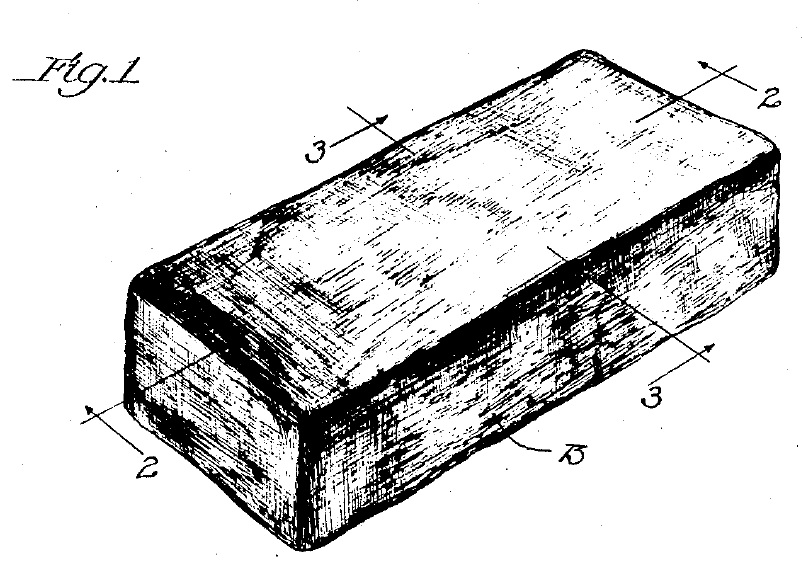On January 28, 1873, Louis Pasteur was awarded U.S. Patent No. 135,245 on Brewing Beer and Ale.
No doubt he was appreciated more by some for this work, than his work with milk.

On January 26, 1965, Noah McVicker and Joseph McVicker received U.S. Patent No. 3,167,440 on Plastic Modeling Composition of a Soft, Pliable Working Consistency, know to millions of children as Play-Doh. The product was based upon a wall paper cleaner that had be repurposed as a modeling compound.
Billions of cans of Play-Doh have been sold, and it can be found in more than 6,000 stores in the U.S., and in at least 75 countries around the world.
On January 24, 1922, U.S. Patent No. 1,404,539 issued to Christian K. Nelson on a “Confection” that was marketed as the Eskimo Pie.

Recognizing the snow storms across the country this week, the patent of the day is U.S. Patent No. 5,595,343, issued to George Marhelko on January 21, 1997 in a snow coloring device:
The invention addresses the “continuing need for new and improved snow coloring device which can be used for allowing children or adults to paint snow in a variety of colors.” The availability of Mr. Marhelko’s invention notwithstanding, it is still a good idea to not eat yellow snow.
On January 18, 1977, actress Julie Newmar received U.S. Patent No. 4,003,094 on Pantyhose with Shaping Band for Cheeky Derrier Relief.
The pantyhose were sold for a while under the name “Nudemar.” Julie received an earlier patent (U.S. Patent No. 3914799) on the panty hose, and another patent (U.S. Patent No. 3935865) on a brassiere. Go Catwoman!
On January 17, 1899, U.S. Patent No. 617,778. issued to Charles D. Seeberger on an escalator.
 Seeberger did not actually invent “the” escalator, as there were several earlier patents, including to Souder U.S. Patent No. 406,314 in 1889 (which was never built), to Reno U.S. Patent No. 470918 in 1892, and Wheeler U.S. Patent No. 479864 in 1892 (which was never built). Seeberger bought Wheeler’s patent, teamed with Otis, and in 1899 produced the first commercial escalator, which won the first prize at the Paris 1900 Exposition Universelle in France.
Seeberger did not actually invent “the” escalator, as there were several earlier patents, including to Souder U.S. Patent No. 406,314 in 1889 (which was never built), to Reno U.S. Patent No. 470918 in 1892, and Wheeler U.S. Patent No. 479864 in 1892 (which was never built). Seeberger bought Wheeler’s patent, teamed with Otis, and in 1899 produced the first commercial escalator, which won the first prize at the Paris 1900 Exposition Universelle in France.